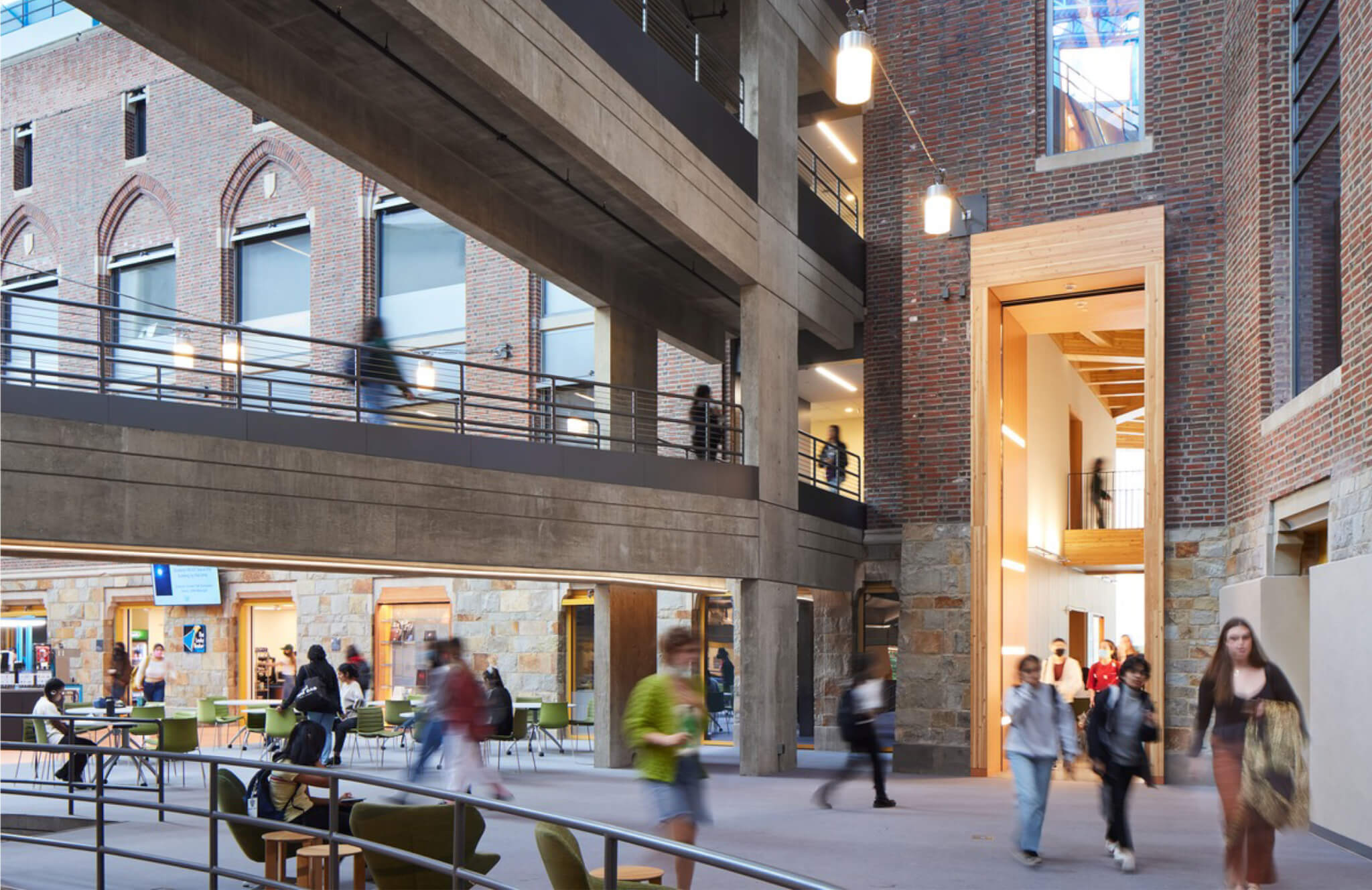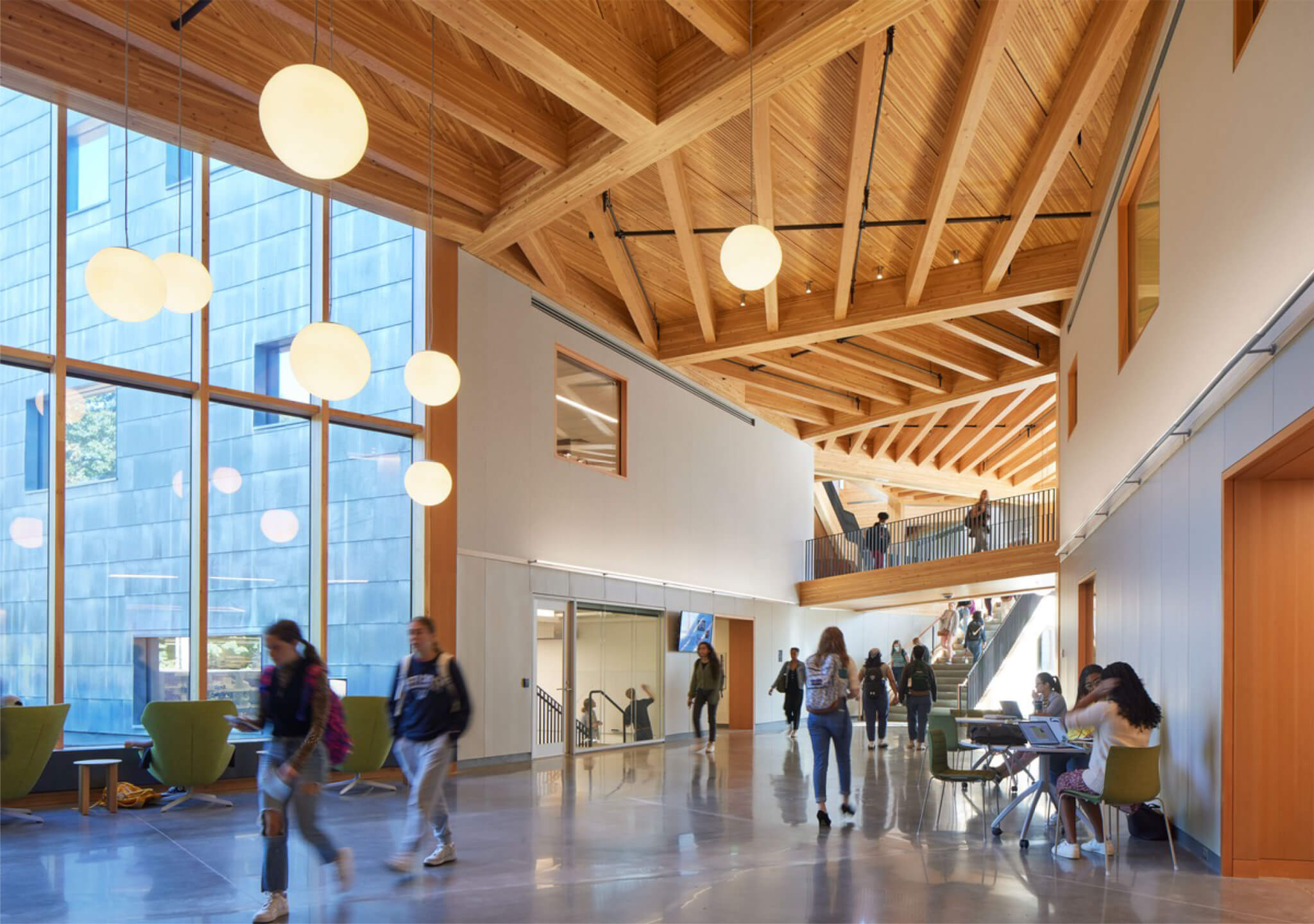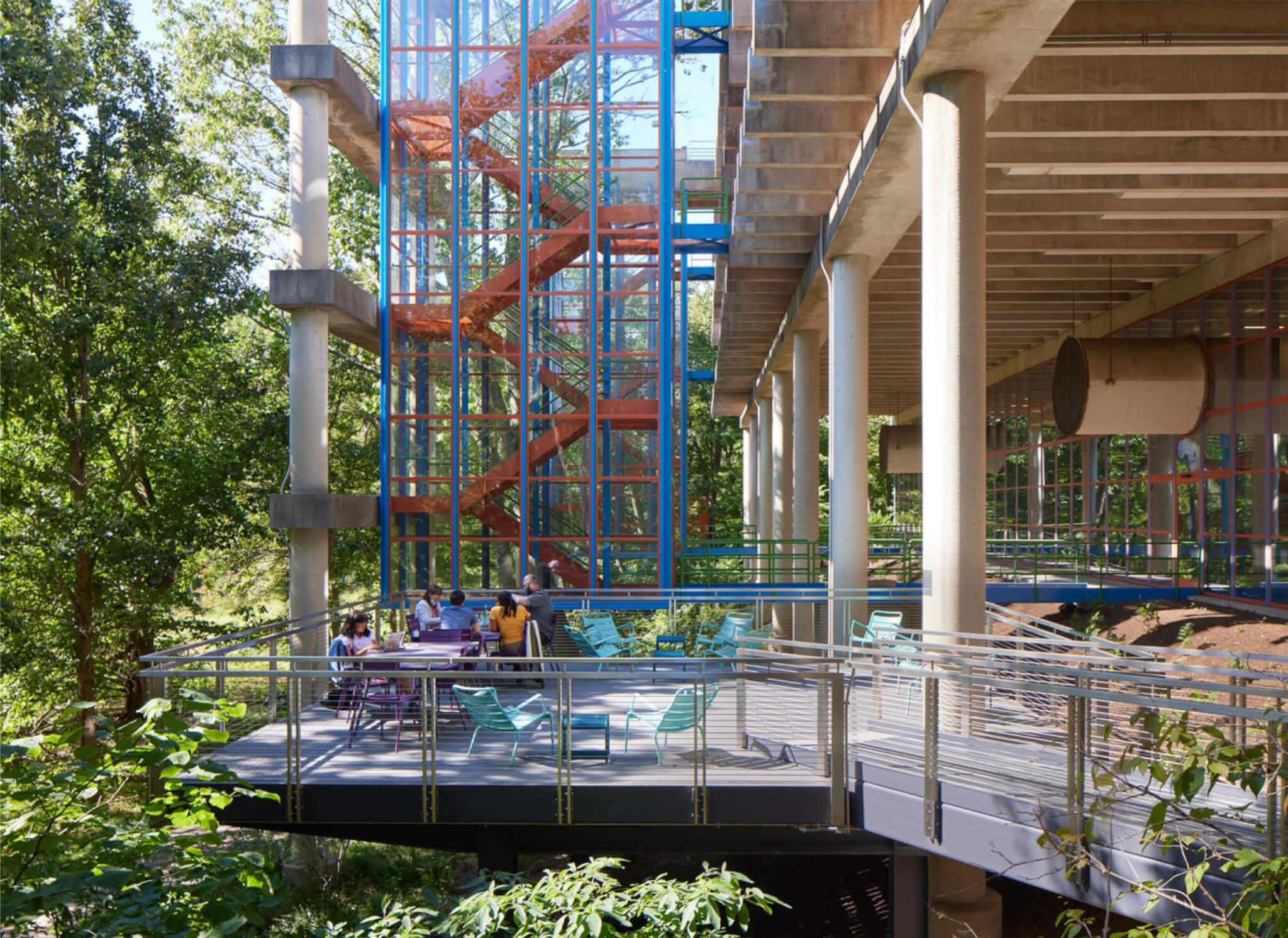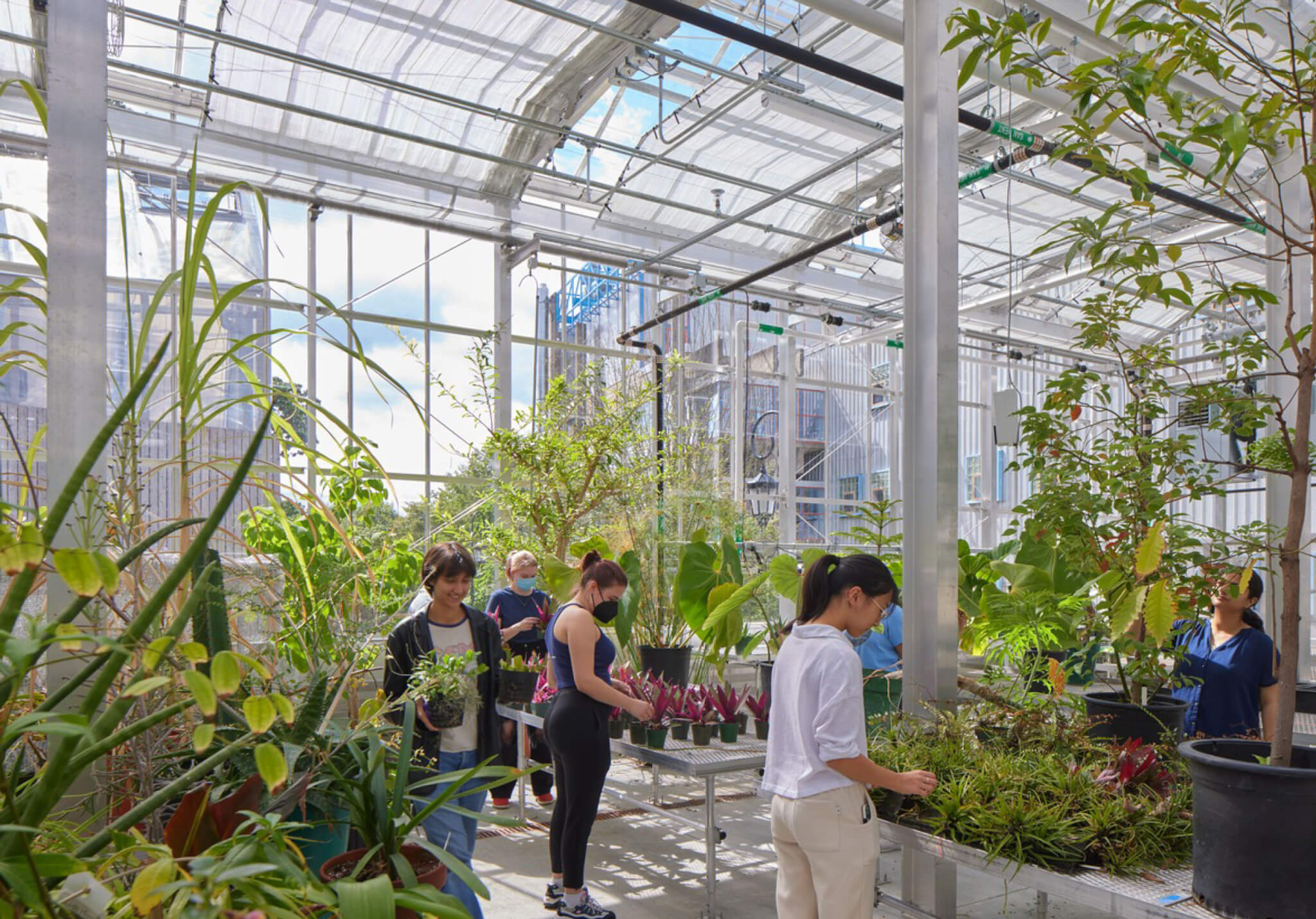SOM conceives the new Wellesley College Science Complex as a “village”
Skidmore Owings & Merrill (SOM) has completed work on the Wellesley College Science Complex, a dramatic redesign of the school’s existing science research and learning facilities anchoring the campus’s aptly named Science Hill. Spanning 100,000 square feet, the reimagining project involved both a significant expansion incorporating mass timber and recycled materials as well as the renovation of outdated science buildings on the northern edge of the 500-acre campus of the all-women liberal arts college in suburban Boston. The redesign takes the original science buildings, an array of structures designed over the span of several decades in various architectural styles, and the surrounding landscape to reimagine the entire site as a cohesive “village.”
A major component of the design was deciding which of the existing buildings could be remodeled and expanded to accommodate the needs of the ambitious refresh while paying mind to historical value and the programming and technological modifications required by the renovation. Ultimately, the L-Wing, a modern 1977 addition to the 1920s-era brick Sage Hall was chosen for its flexibility. Also integrated into the renovation and expansion are the several other existing structures and facilities located on Science Hill, including the Whitin Observatory, the Global Flora Conservatory, the arboretum, and the botanic gardens.

“Wellesley College is proud of our record educating the highest number of women who go on to receive PhDs in STEM fields among our liberal arts peers,” said Wellesley College President Paula A. Johnson in a statement. “The new Science Complex will allow us to strengthen our commitment to educating the next generation of inclusive STEM leaders by creating a collaborative hub for teaching and research where students, faculty, and staff can discover and learn together.”
Wellesley College offers a number of degrees within the STEM field; the classrooms, offices, and laboratories housing these facilities are spread across several buildings. To make way for the reimagined Science Complex, the architects demolished a portion of Sage Hall, keeping an original brick wall and incorporated it into the new design, realized as a series of smaller structures. Shiplap and zinc paneling on the facade of the Science Complex and the exposed concrete of the interior inside stand out against the neighboring buildings dotting the college’s lakefront property.

“We reimagined the science center as a village for teaching, learning, and research,” added SOM Design Partner Colin Koop. “The project is a careful mix of removal, renovation, and addition that will give students and faculty a more inviting and engaging experience.”
At the intersection of the L-Wing and restored portion of Sage Hall is the Focus, an atrium that spans several floors and opens directly to the outdoors and adjacent hallway with a seamless transition guided by the introduction of new materials including mass timber, which forms the core of the expansion. Staircases, ceiling rafters, window framing, and even sculptural furnishings were constructed using the sustainable building material.
In the L-Wing, a 200-foot-long hallway was transformed into “whiteboard alley.” Off of the main volume, several outdoor decks were erected, placing study and gathering spaces directly within the landscape. Spatially, the layout places the classrooms, offices, and laboratories for similar disciplines nearby to one another, with couches, chairs, and tables for gathering integrated throughout.

Henry Fowle Durant, founder of Wellesley, adamantly thought women should be “educated in the midst of beauty,” and therefore the college later commissioned landscape architect Frederick Law Olmsted, Jr. to design the campus to give it that desired beauty. This latest renovation rekindles the original vision of Olmsted, while also introducing new gardens or “living laboratories.” This interactive landscape will be realized on the site through classroom instruction during the upcoming spring semester.

Before the reimagining project, Wellesley’s science buildings were the least energy efficient on campus. Now, following a retrofit and overhaul involving stormwater capture, updated mechanical systems, natural light, recycled materials, and more, the complex is among the most sustainable on campus. As a result of these thoughtful sustainability measures, the project has achieved LEED Platinum certification—a solid step in the college’s goal to achieve carbon neutrality by 2040.

